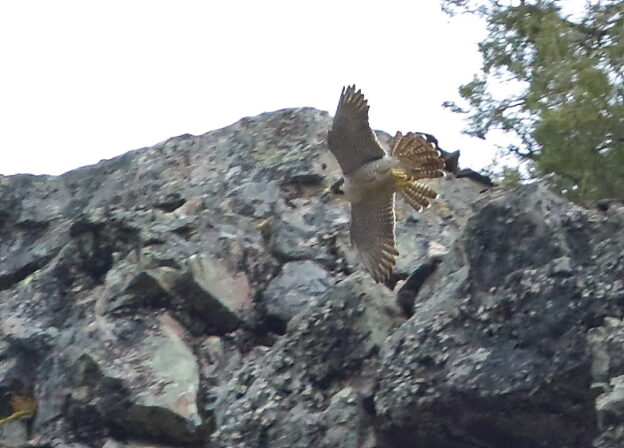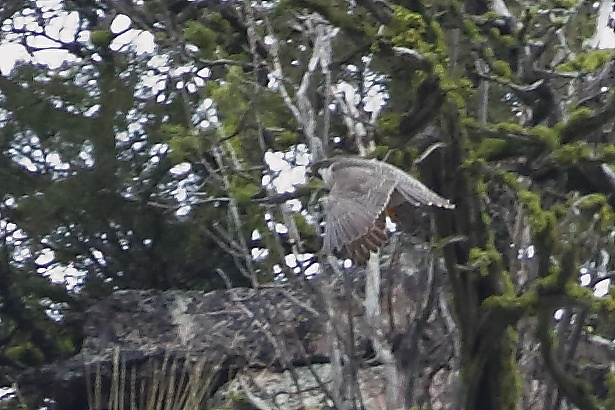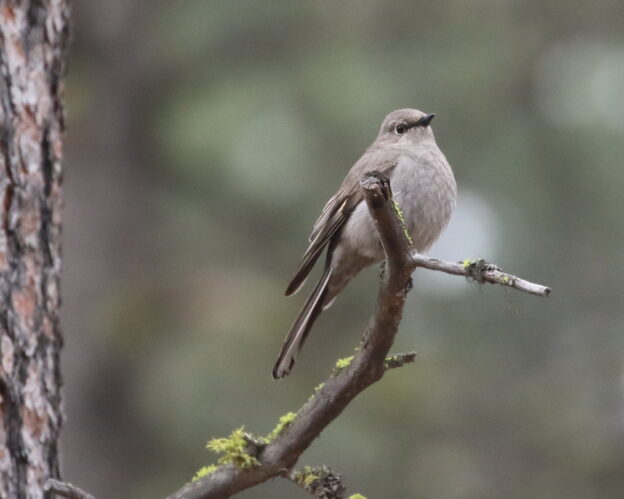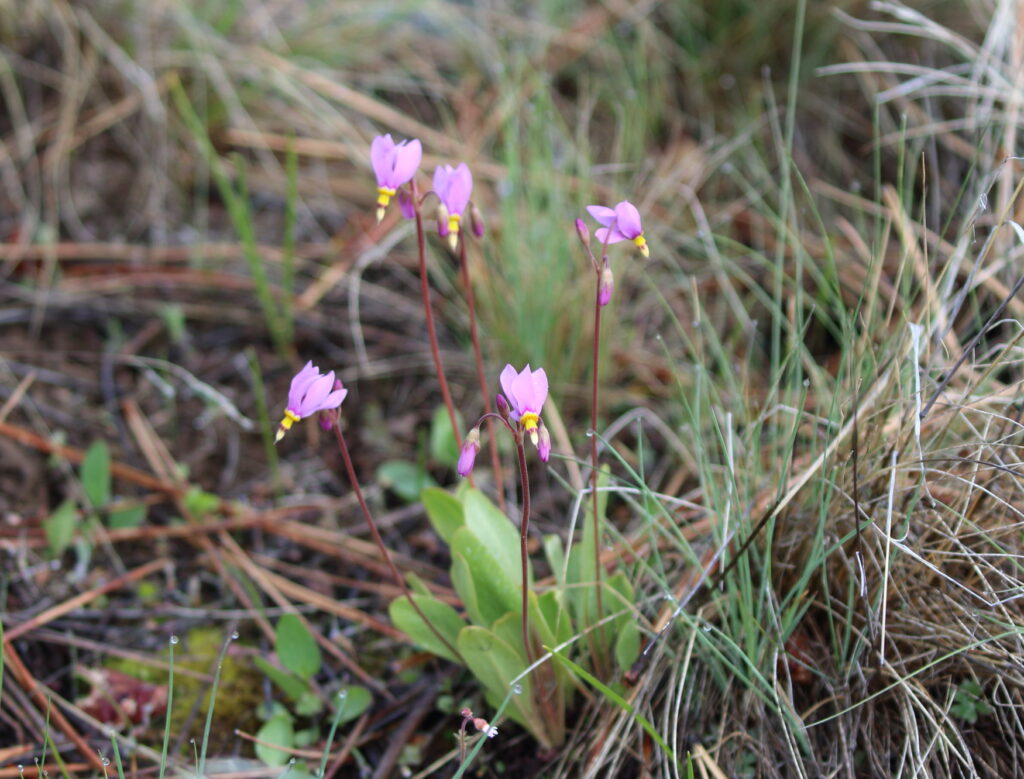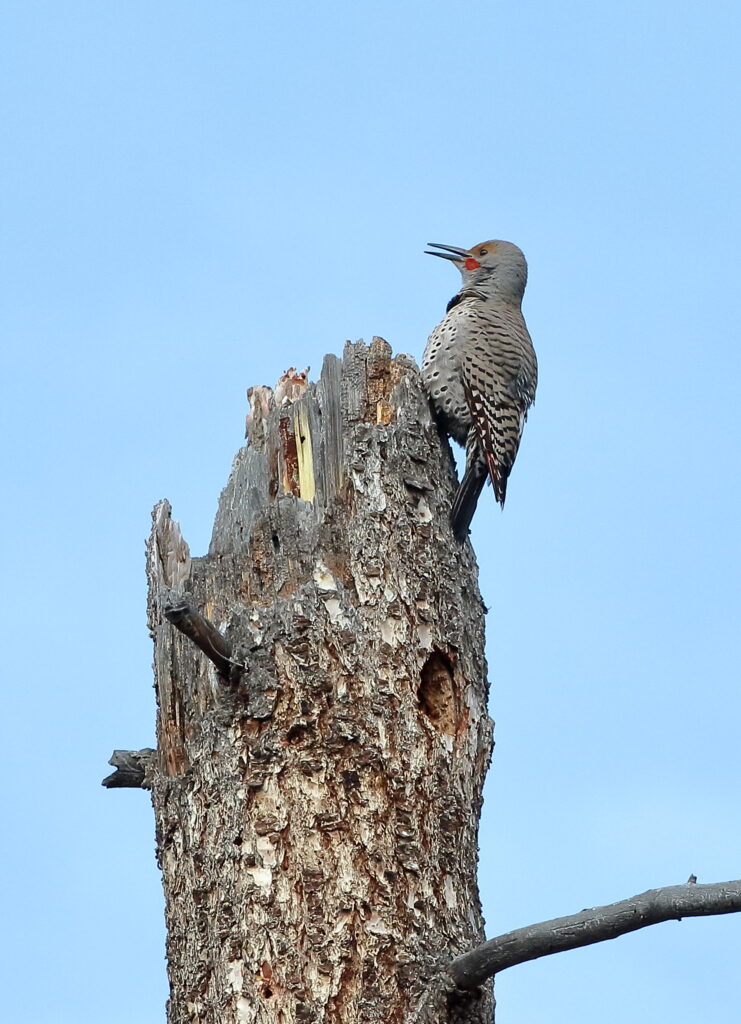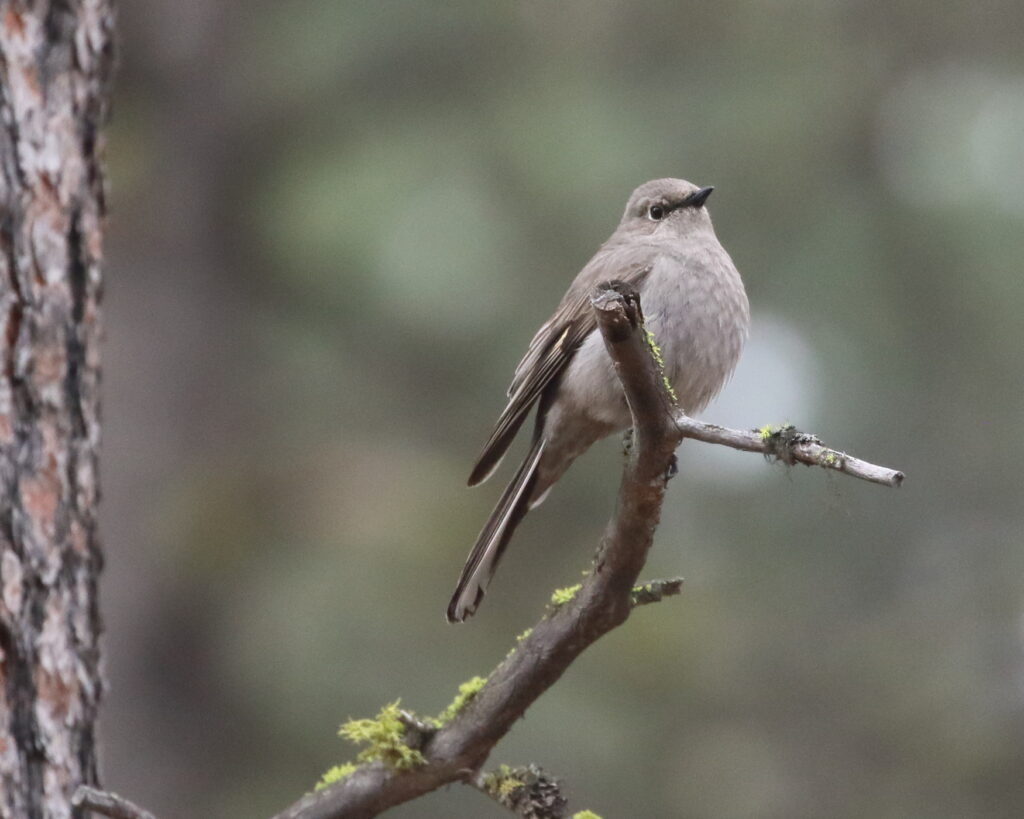Thank you for sharing this post!
Day 3 of Birding Week Therapy proved an easy task thanks to my daughter’s regular Wednesday night soccer practice out at Fort Missoula—a location that happens to sit next to what may be Missoula’s best birding location, affectionately known as “the gravel quarry.” Over the past years, Braden and I have birded the quarry dozens of times and counted about 130 different species there, including a number of rarities such as Long-tailed Duck, Pacific Loon, and Eurasian Wigeon that swing by during spring and fall migrations. This time of year, I was especially keen on finding some cool sparrows, which can also drop in for a week or two at a time. I would have preferred a morning visit, but birders can’t always be choosers, so after dropping my daughter off, our dog Lola and I set off to see what we could find.

Few ducks graced the pond and they were too far away to ID without a scope, so we hurried on to the river to look for sparrows. Alas, the action proved pretty slow, but as I was peering into one of my favorite sparrow spots, two larger birds dived into a patch of tansy. One flew off again before I could ID it, but the other extricated itself and perched on a nearby tree. Its behavior led me to believe it was a Sharp-tailed Hawk, but on closer inspection I saw that it was a Merlin! And quite late in the year for the location! I took my time studying it since I often have difficulty identifying these in the field.

Minutes later I saw another raptor circling and just assumed it was the Merlin, but no, it proved to be a Cooper’s Hawk! Braden later reminded me that raptor migration was in full swing so both sightings made sense, along with the lone Turkey Vulture I saw in the distance.

Soon, I heard weird guttural calls that I have come to love—Sandhill Cranes. Three of them caught the gorgeous evening light and I am guessing they breed nearby since they’ve become a common sight out there. Alas, songbirds proved scarce but on our way back to the car, Lola and I finally dissected a White-crowned Sparrow from some brush. I’d had bigger days at the quarry—and better photos, too—but also much worse days. I knew, though, that I’d be returning for Day 6 of Birding Therapy Week—and in the morning!


